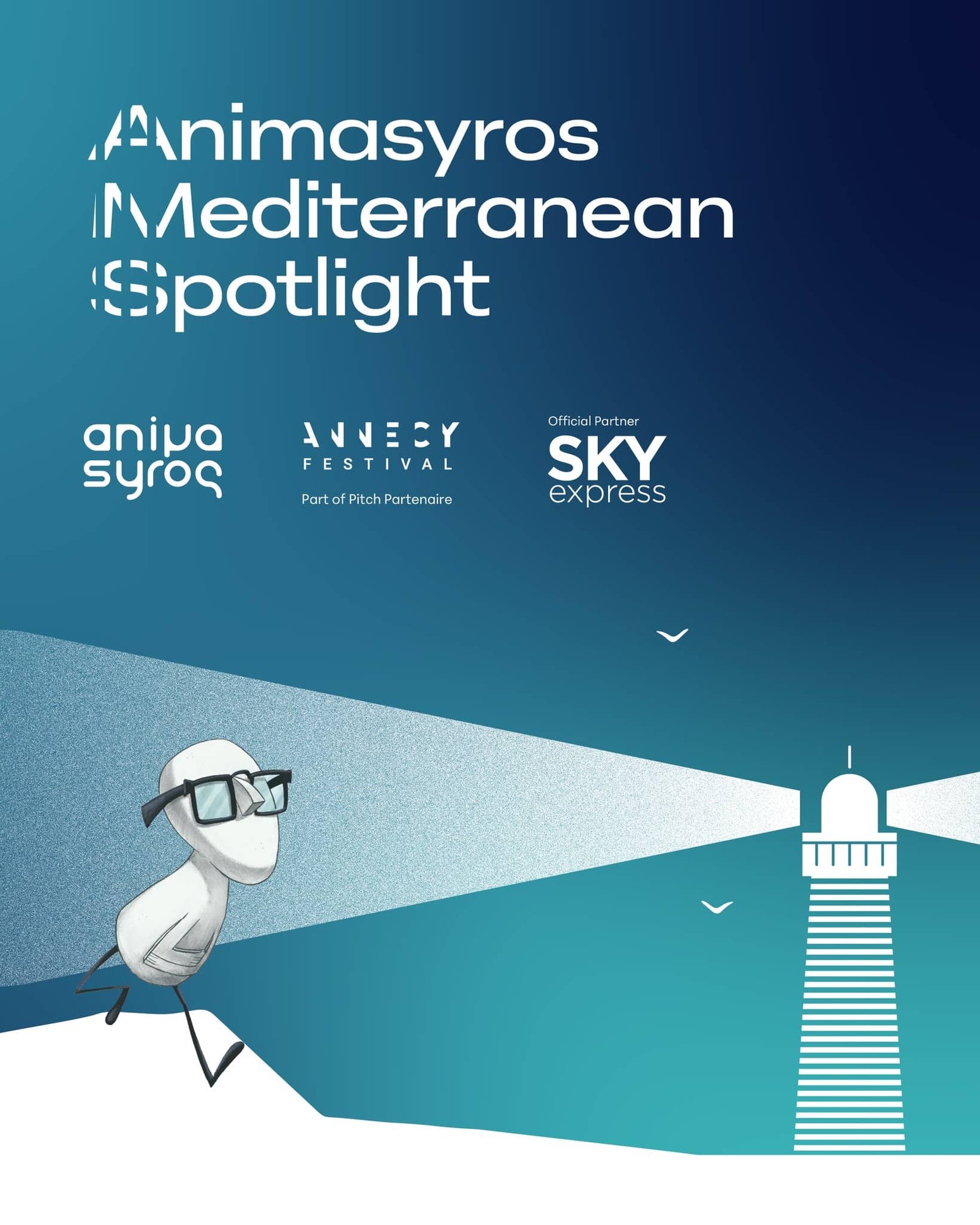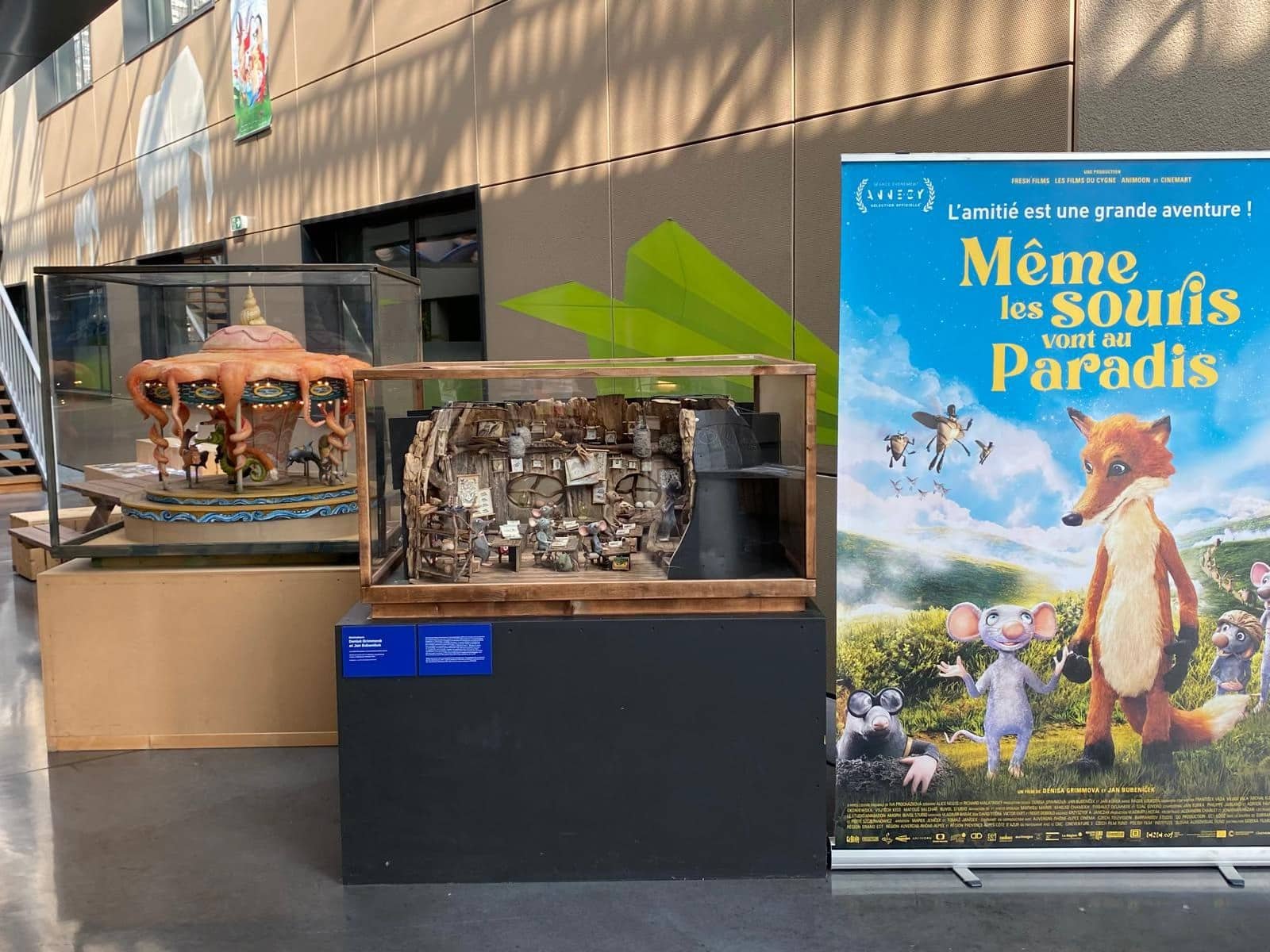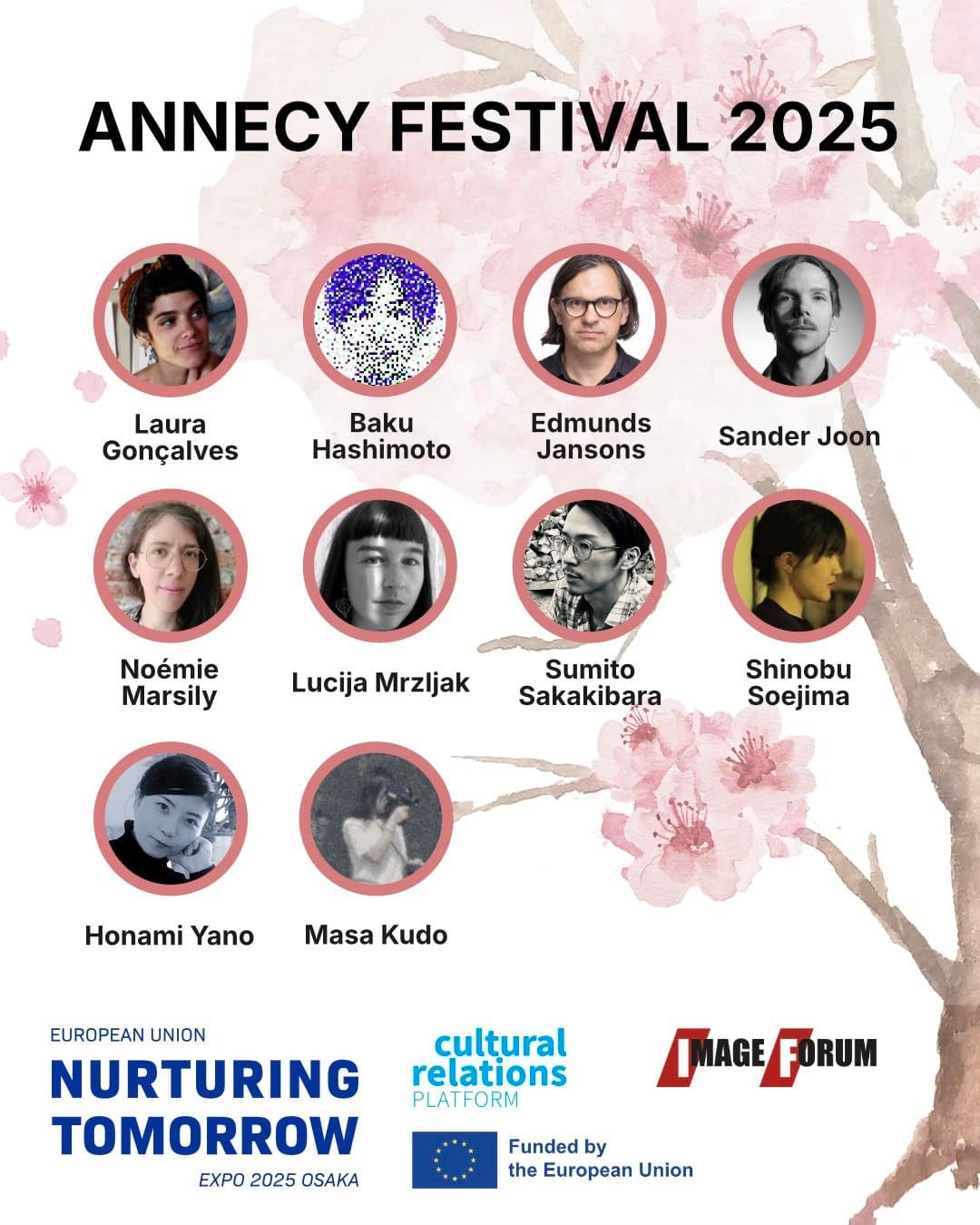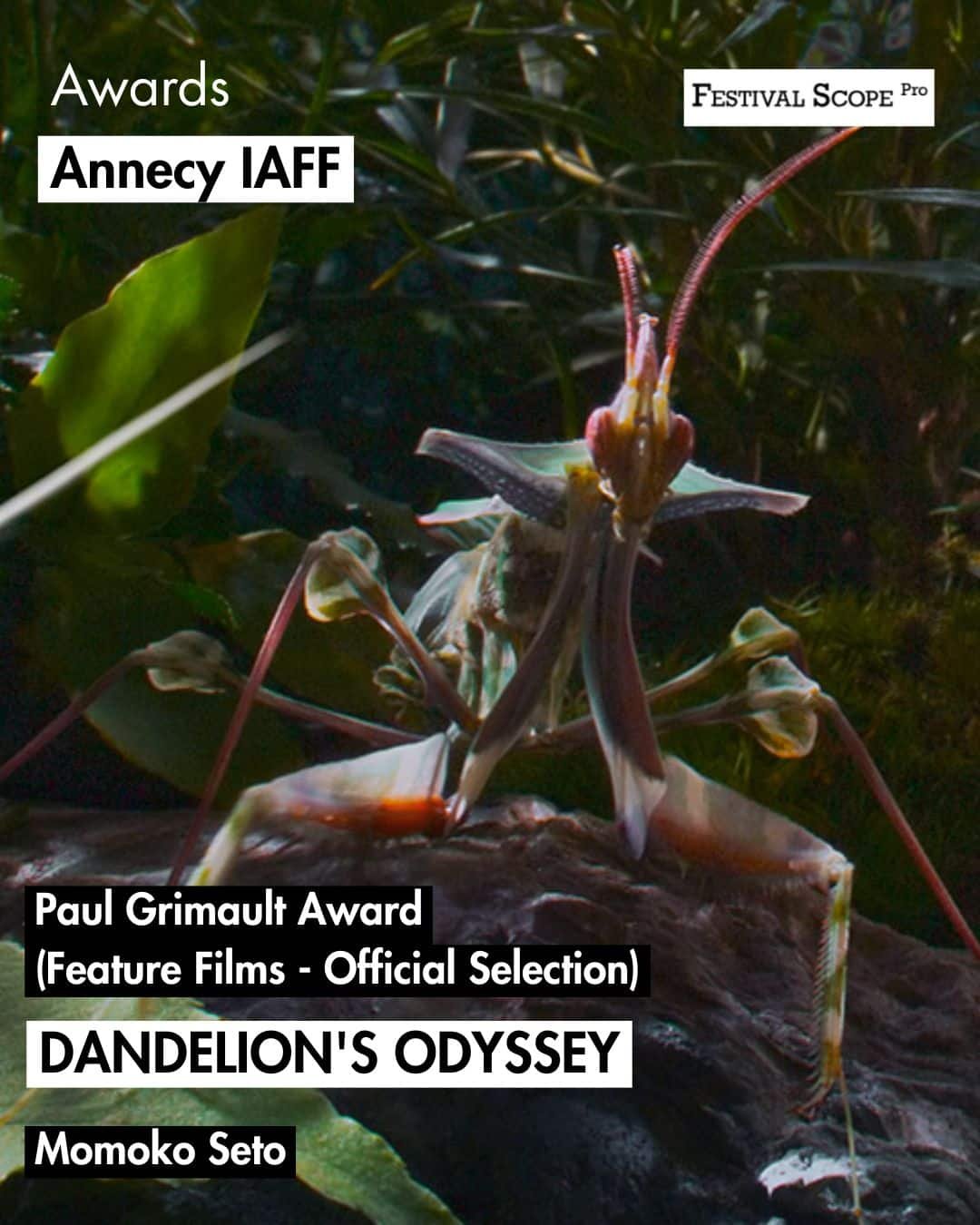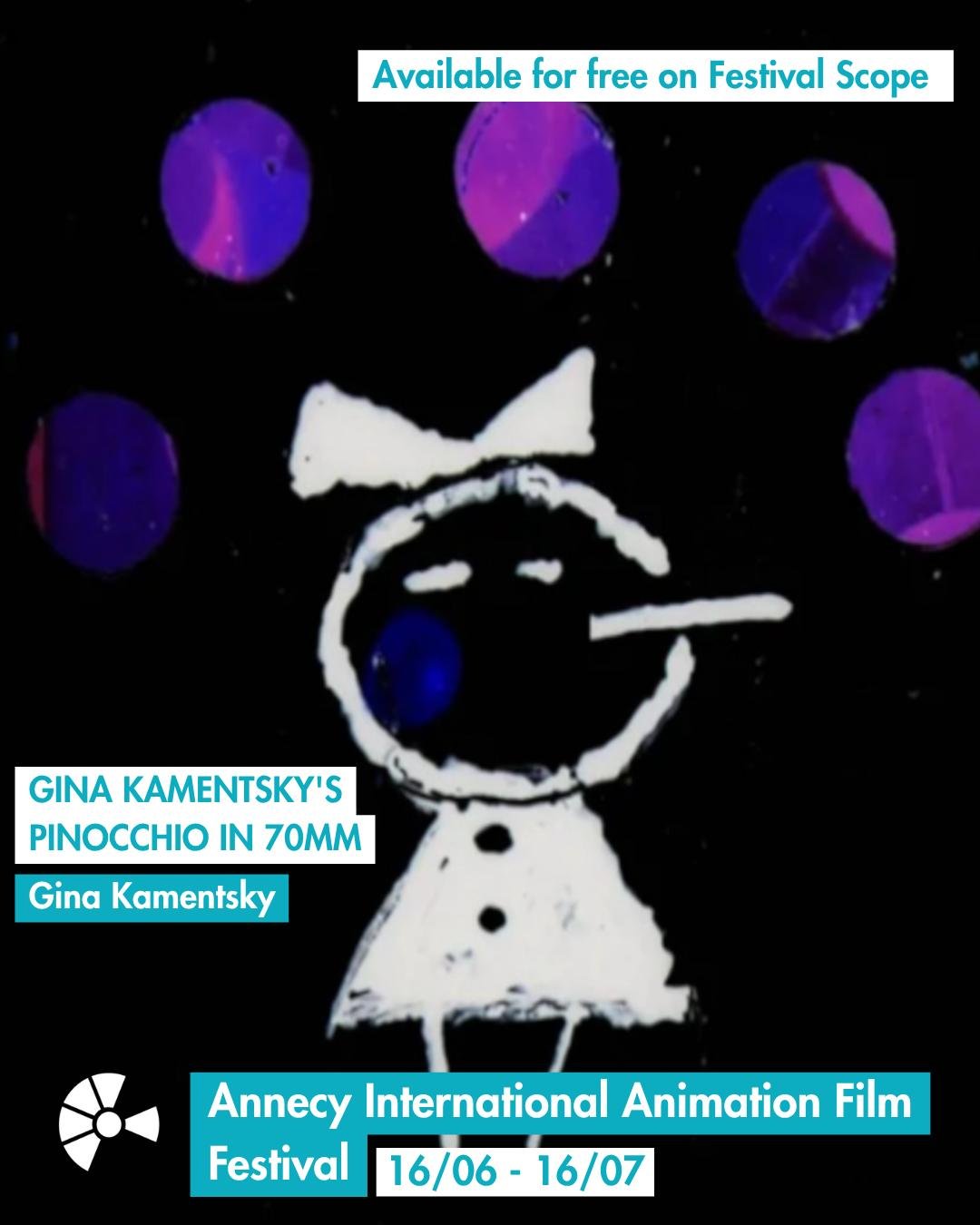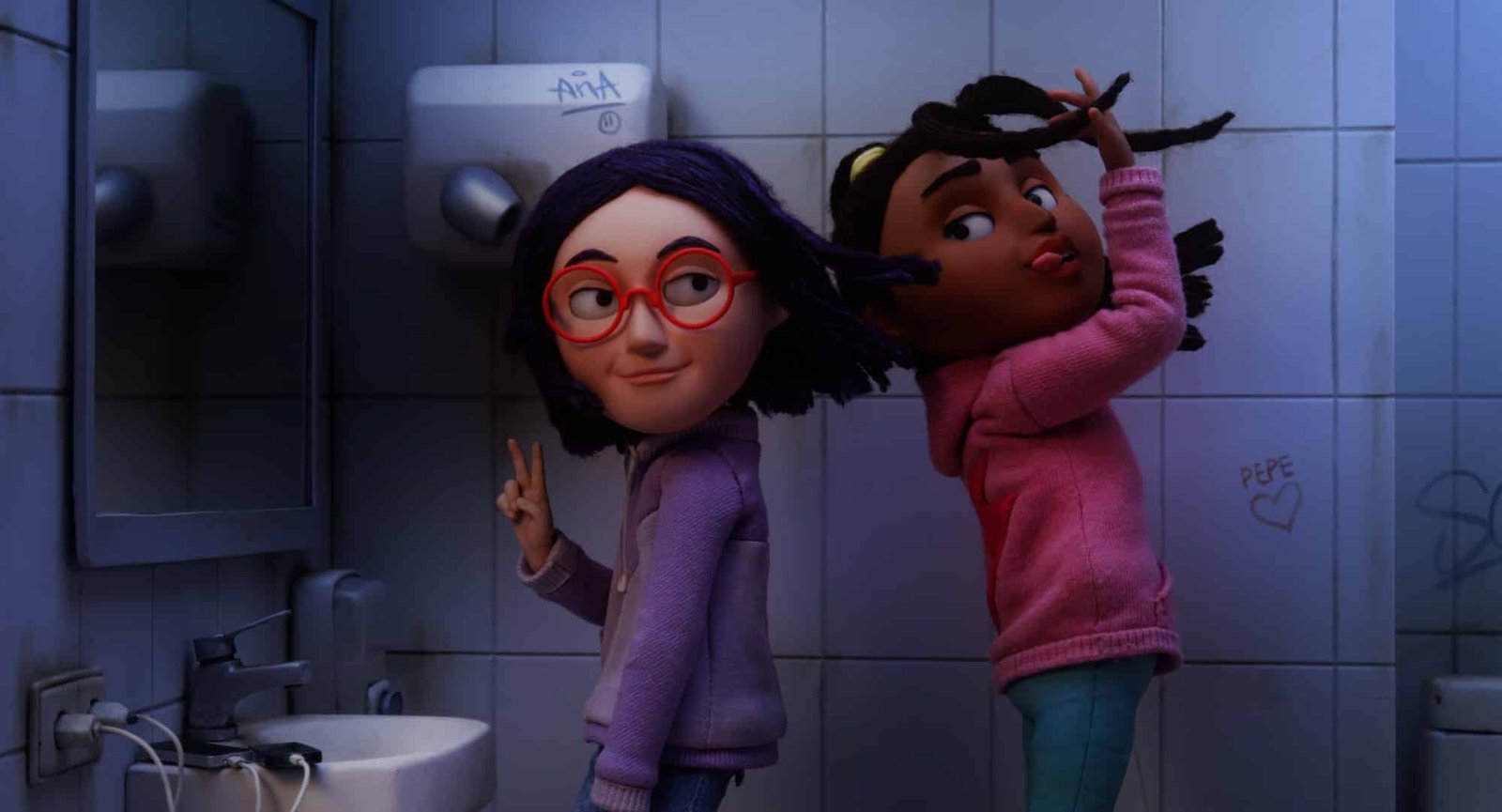Annecy International Animation Film Festival 2026
Background & History
The Annecy International Animation Film Festival, universally recognized as the “Cannes of Animation,” began in 1960 in Annecy, France, a charming Alpine town known for its canals and Lake Annecy. It evolved from the Journées Internationales du Cinéma d’Animation (JICA), launched in 1956 as a non-competitive segment of the Cannes Film Festival to showcase animation’s artistic potential. Founders Pierre Barbin, André Martin, and Michel Boschet, alongside Annecy’s Savoy film club, established the first festival on June 7, 1960, drawing 500 attendees with screenings of works by pioneers like Emile Cohl, Winsor McCay, Lotte Reiniger, and Norman McLaren.
Supported by the newly formed International Animated Film Association (ASIFA), the festival aimed to elevate animation from commercial entertainment to a respected medium for storytelling and experimentation. Early editions faced challenges, including a 1968 cancellation due to France’s May ’68 socio-political unrest, which halted cultural events nationwide. Resuming in 1971, Annecy formalized its competitive structure with ASIFA’s backing, introducing juried awards like the Cristal d’Annecy and expanding its international scope with entries from Eastern Europe, Japan, and beyond.
Initially biennial, the festival shifted to an annual event in 1998 to meet the animation industry’s rapid growth, driven by CGI advancements and global markets. The 1985 launch of the Marché International du Film d’Animation (MIFA) transformed Annecy into a business powerhouse, facilitating multimillion-dollar deals and launching careers at studios like Pixar, Aardman, and Studio Ghibli. By the 1990s, media coverage surged, with nearly 300 journalists attending, reflecting animation’s mainstream rise with films like Toy Story (1995).
Key milestones include becoming an Oscar-qualifying event for short films in 1997, premiering acclaimed works like Wallace & Gromit: The Wrong Trousers (1993), Coraline (2009), and Soul (2020), and honoring legends such as Ray Harryhausen, Isao Takahata, and Nora Twomey. Attendance grew from 900 accredited participants in 1983 to over 18,000 from 118 countries today, with over 4,000 annual film submissions. Annecy’s cultural significance lies in its role as a global hub, bridging indie filmmakers with major studios and promoting inclusivity through initiatives like women-in-animation panels, African and Latin American spotlights, and residencies for emerging talent.
Recent adaptations include hybrid formats post-2020’s COVID-19 cancellation, sustainability efforts like carbon-neutral operations, and discussions on AI’s role in animation. The 2026 edition, shifted to late June due to the G7 Summit in Haute-Savoie, reflects Annecy’s resilience, ensuring accessibility amid logistical challenges. Economically, it generates over €20 million for the region, supported by CITIA (Cité de l’Image en Mouvement), which funds education, digital projects, and year-round exhibitions like the Musée de l’Animation. Annecy’s legacy endures as a beacon for creativity, fostering trends, collaborations, and the next generation of animators within France’s cinematic heritage.
- Origins: Emerged from JICA (1956) at Cannes, formalized in Annecy in 1960 with ASIFA support.
- Early Challenges: 1968 cancellation due to protests; biennial until 1998.
- Growth Milestones: MIFA launch (1985), Oscar qualification (1997), annual status (1998).
- Cultural Impact: Premieres Oscar-winners, promotes diversity, bridges global/indie creators.
- Modern Evolution: Hybrid formats, sustainability focus, residencies for new talent.
- Economic Role: €20M+ regional impact, supported by CITIA’s educational and digital initiatives.
- Global Influence: Showcases anime, African animation, and experimental works, shaping industry trends.
Event Highlights
Main Activities or Performances
- Official Competitions: Over 300 films compete across categories: feature films, short films, TV series, commissioned works (ads, music videos), graduation films, Off-Limits (experimental), Perspectives (emerging voices), Young Audiences, and VR/immersive experiences, judged by international panels for Cristal awards.
- World Premieres and Sneak Peeks: Exclusive first looks at 2026 blockbusters from studios like Disney, Pixar, Netflix, or DreamWorks (e.g., potential sequels like Bad Guys 2 or Eyes of Wakanda), alongside indie and international gems.
- Masterclasses and Workshops: In-depth sessions with industry icons on character design, storyboarding, AI integration, sustainable production, and diversity; past speakers include Pete Docter, Nora Twomey, and Mamoru Hosoda.
- MIFA Market Activities: Networking with 1,200+ exhibitors, pitch sessions for new projects, recruitment fairs for studios, and conferences on trends like streaming platforms, metaverse animation, and co-production models.
- Exhibitions and Retrospectives: Thematic displays honoring animation history (e.g., 2025’s Hungary focus), techniques (stop-motion, 2D), or studios, with interactive setups like VR booths and concept art galleries.
- Signing Sessions and Meet-the-Artist: Direct access to creators for autographs, photo ops, and Q&As at Bonlieu or old town venues, often with themed props like giant snow globes.
- Special Screenings: Tributes to lifetime achievers, studio anniversaries (e.g., Pixar’s 40th), and curated programs on themes like environmental storytelling or women in animation.
- Industry Panels and Announcements: Keynotes on studio slates, AI ethics, political animation, and global co-productions, often sparking industry-wide debates.
- Educational Outreach: Workshops with Gobelins School, mentorship for students, and open lectures on animation’s societal impact.
- Live Demonstrations: Real-time animation creation, sound design sessions, and tech showcases like motion capture or 3D printing.
Special Traditions or Features
- Lakeside Giant Screen Projections: Nightly open-air screenings at Le Pâquier of classics, winners, and previews, creating a magical communal experience with Alpine vistas.
- “Le Lapin” Chant: A playful ritual where audiences shout “Le Lapin!” upon spotting a hidden rabbit in the festival’s sponsor trailer, fostering interactivity.
- Award Ceremonies: Lavish galas at Bonlieu presenting Cristal d’Annecy, special prizes, and honorary awards; past recipients include Michel Ocelot and Brenda Chapman.
- Annecy s’anime Program: Free public events like family screenings, street animations, and pop-ups to make animation accessible to all.
- Festival Residency Showcases: Presentations of mentored feature film projects, supporting emerging directors from regions like Africa or South America.
- Sustainability Initiatives: Eco-friendly traditions like carbon-neutral screenings, green workshops, and recycling drives, reflecting global environmental priorities.
- Cosplay Parades: Annual processions blending animated characters with Savoyard folklore, featuring giant puppets and fan costumes.
- Milestone Celebrations: Honoring anniversaries, e.g., the festival’s 65th in 2025 or guest country spotlights, with dedicated exhibitions.
- Interactive Fan Events: Scavenger hunts, live drawing battles, and animation-themed escape rooms in the old town.
- Cultural Exchanges: Collaborations with local artists, integrating animation with Savoyard music or crafts for a unique regional-global fusion.
Unique Attractions for Visitors
- Immersive VR and AR Zones: Interactive setups across venues to explore virtual worlds, test animation software, or experience 360° films.
- Pop-Up Events: Surprise activities like boat tours on Lake Annecy with animation themes, live radio broadcasts, or street puppet shows.
- Childcare and Family Features: Le Ballon Rouge on-site services, kid workshops (e.g., stop-motion creation), and family-friendly screenings for inclusivity.
- Networking Lounges: Exclusive rooftop parties at Imperial Palace or lakeside mixers, fostering professional and fan connections.
- Cultural Installations: Animation-inspired street art, murals, and temporary sculptures in the old town, blending with medieval architecture.
- Merchandise and Art Markets: Booths selling limited-edition prints, collectibles, and indie comics, creating an animated marketplace.
- Guided Animation Tours: Festival-organized walks through production studios, historical venues, or CITIA’s animation museum.
- Global Pavilions: Country-specific booths (e.g., Japan, Brazil) offering workshops, screenings, and cultural immersions like anime drawing or samba-themed events.
- Fan Photo Ops: Themed setups with life-size character models or Playmobil figures for memorable keepsakes.
- Technology Showcases: Demos of cutting-edge tools like AI-driven animation software or holographic displays, open to attendees.
Date & Duration
Dates
- Dates: June 21 – June 27, 2026 (shifted from early June to avoid the G7 Summit in Haute-Savoie).
Duration
- Duration: 7 days (MIFA market runs June 23–26; pre-festival events like residency submissions occur earlier).
Venue / Location
The festival transforms Annecy, the “Venice of the Alps,” into an animation epicenter, with its canals, cobblestone streets, and Lake Annecy creating a breathtaking backdrop. The main hub is Bonlieu Scène Nationale, hosting premier screenings, ceremonies, and conferences. Other venues include La Turbine and Haras for exhibitions and workshops, cinemas like Pathé Annecy, Megarama, Auditorium Seynod, Le Mikado, and La Salle Pierre Lamy for competitions, and the Imperial Palace for MIFA booths and upscale networking. Le Pâquier’s lakeside fields host giant open-air projections, while the old town’s streets feature pop-ups, cosplay parades, and art installations. CITIA’s Musée de l’Animation offers year-round context, enriching the festival experience.
- Main Venue: Bonlieu Scène Nationale for screenings, galas, and masterclasses.
- Additional Sites: La Turbine, Haras, Pathé, Megarama, Seynod, Mikado, and Imperial Palace for diverse events.
- Outdoor Spaces: Le Pâquier for giant screenings; old town for markets and parades.
- Cultural Hub: CITIA’s animation museum for historical context and exhibitions.
- Google Maps Address: Bonlieu Scène Nationale, 1 Rue Jean Jaurès, 74000 Annecy, France.
Ticket Information
- Sales Methods: Accreditations and passes sold exclusively online via annecyfestival.com, opening spring 2026; personal portals for session reservations. On-site single tickets at venue box offices for non-accredited attendees, subject to availability. No lottery, but high-demand screenings require early booking. Packages bundle festival access, MIFA entry, workshops, or VIP perks; refunds available for cancellations per terms.
- Admission Type: Primarily paid for full access; free elements include outdoor projections, Annecy s’anime events, and select exhibitions to broaden reach.
- Pricing in USD: Based on 2025 rates (2026 expected similar, adjusted for inflation; 1 EUR ≈ 1.10 USD). Minimum ticket pricing: $16.50 USD (reduced single screening for students, under 18, or locals’ Pass 74 for unlimited access). Maximum ticket pricing: $715 USD (premium MIFA accreditation with VIP lounge, priority seating, and shuttles).
- General Pricing Details: Festival accreditation: ~$110–$165 USD (basic access); MIFA full: ~$550–$660 USD (market pros); single screenings: $8–$11 USD; student/youth passes: ~$55 USD; group rates for schools/companies; family bundles with childcare add-ons.
- Special Seating or VIP Options: Gold/Platinum accreditations (~$330–$440 USD) offer front-row seating, fast-track entry, exclusive events, meet-and-greets, and dedicated shuttles. Accessibility options (e.g., wheelchair seating) free; VIP lounges at Imperial Palace or Bonlieu.
- Additional Notes: Early bird discounts possible; local resident passes (Pass 74) for Haute-Savoie; check terms for session limits or transferability.
Contact Information
- Email: info@annecyfestival.com (general, ticketing); mifa@annecyfestival.com (market, business); press@annecyfestival.com (media); residency@annecyfestival.com (submissions, residencies); volunteer@annecyfestival.com (volunteer roles); helpdesk@annecyfestival.com (technical, accessibility).
- Phone: +33 (0)4 50 10 09 00 (CITIA main line, multilingual); +33 (0)4 50 33 44 00 (Bonlieu venue); +33 (0)4 50 45 00 33 (Annecy Tourist Office for logistics).
- Website: https://www.annecyfestival.com (program, accreditations, updates); https://mifa.annecyfestival.com (market details); https://helpdesk.annecyfestival.com (FAQs, planning); https://www.citeanimationannecy.com (museum, education).
- Social Media: @annecyfestival (Instagram, X/Twitter for live updates, trailers); Facebook.com/AnnecyFestival (community, events); YouTube.com/AnnecyFestival (masterclasses, highlights); LinkedIn for professional networking.
- Key Staff: Mickaël Marin (CEO, CITIA); Véronique Encrenaz (Head of MIFA); Marcel Jean (Artistic Delegate); Pierre-Loup Rajot (Festival Director); contact via respective emails.
- Press/Volunteers: Press applications via press@annecyfestival.com (deadlines mid-May 2026, includes media perks); volunteer roles (ushers, tech, logistics) via volunteer@annecyfestival.com, apply early 2026 for free access and networking.
- Additional Notes: Response times 24–48 hours off-peak, up to 72 during festival; support in English, French, Spanish, some Japanese. Official app for schedules, maps, notifications; emergency contacts via tourist office or app.
Cultural Experience
The Annecy Festival immerses attendees in a vibrant celebration of animation’s global artistry, set against the enchanting backdrop of Annecy’s medieval streets and Alpine lake. It showcases a spectrum of styles—from hand-drawn whimsy to cutting-edge CGI and VR—sparking dialogues on universal themes like climate change, identity, and social justice, often in informal settings like lakeside cafes where filmmakers and fans mingle.
Traditions include communal outdoor screenings at Le Pâquier, evoking cinema’s golden era with picnics featuring local cheeses under starry skies. The “Le Lapin” chant, where audiences cheer for a hidden rabbit in the sponsor trailer, adds playful interactivity. Cosplay parades blend animated characters with Savoyard folklore, featuring giant puppets, folk dancers, and fan costumes, turning streets into a living canvas.
Music is central, with live orchestras scoring silent classics, jazz or electronic sets at Bonlieu, and DJ mixes fusing animation soundtracks with Alpine folk tunes, creating a festive atmosphere. Social customs like evening fondue gatherings foster collaboration, where creators share stories across cultures, reinforcing animation’s role as a universal language.
The festival promotes inclusivity through panels on diversity, residencies for underrepresented regions, and workshops on traditional techniques like cut-out animation, inspiring attendees to explore their own creativity. This cultural tapestry not only celebrates animation’s evolution but also weaves it into Annecy’s Savoyard heritage, leaving a lasting impact on visitors.
- Traditions: Lakeside screenings, “Le Lapin” chant, cosplay parades, award galas, residency showcases, eco-friendly events.
- Music and Customs: Orchestral scores, folk-jazz fusion, communal dining, networking rituals, street performances.
- Cultural Significance: Global diversity spotlights, gender inclusivity, historical tributes, educational outreach, regional-global fusion.
Food & Drinks
- Savoyard Classics: Fondue Savoyarde—melted Beaufort, Comté, Emmental cheeses with bread, ideal for sharing (~$20–$30 USD at La Ciboulette, Café Brunet, or Le Chalet).
- Hearty Regional Dishes: Tartiflette—potatoes, lardons, onions, Reblochon cheese, a cozy Alpine staple (~$15–$25 USD at Salle des Gardes, Le Fréti, or mountain restaurants).
- Local Meats and Pastas: Diots sausages in white wine with crozets (buckwheat pasta), embodying Savoyard flavors (~$18–$22 USD at Captain Pub or Chalet de l’Aulp).
- Cheese Specialties: Raclette—melted cheese scraped over potatoes and charcuterie, an interactive meal (~$25 USD at L’Alpage or old town stalls).
- Lake-Inspired Seafood: Fresh perch or pike from Lake Annecy, grilled or in garum sauces, showcasing sustainable fishing (~$20–$30 USD at Chez Ingalls or La Voile).
- Sweet Treats: Gâteau de Savoie (sponge cake), tarte aux myrtilles (blueberry tart), or génépi-infused desserts (~$5–$10 USD at Philippe Rigollot or Pâtisserie du Lac).
- Drinks Selection: Apremont/Roussette white wines, génépi liqueur, craft beers, or Aperol Spritz; non-alcoholic herbal teas or lake-inspired mocktails (~$5–$15 USD at Savoie Bar or lakeside cafes).
- Vegetarian/Vegan Options: Plant-based fondue, crozet gratins without meat, seasonal salads with lake greens (~$12–$20 USD at Sapaudia Pizzeria, Tres Alp’ain, or La Farmette).
- Street Food and Budget Eats: Crepes, cheese baguettes, charcuterie from markets (~$8–$12 USD); BYO picnics to save, as alcohol sales stop at 8 PM in supermarkets.
- Festival-Specific Snacks: Animation-themed treats like Smurf cupcakes or character-shaped cookies at pop-up stalls; quick grabs for busy schedules.
- Dining Tips: Reserve tables during peak festival hours; explore old town for affordable eats; try food trucks for variety.
Getting There
- Nearest Airports: Geneva International (GVA), 50 km north (45-min drive/shuttle, ~$15–$20 USD via FlixBus or Alpes Logistique); Lyon Saint-Exupéry (LYS), 125 km south (1.5-hour train, ~$30–$50 USD).
- Train Options: TGV from Paris (3.5 hours, ~$50–$100 USD), Lyon (2 hours), or Geneva (1 hour) to Annecy station; regional TER trains for nearby towns.
- Public Transport Within Annecy: SIBRA buses/trams (~$2 USD/ride, ~$5 USD/day pass); festival shuttles link venues, hotels, and airports (book via app or website).
- Driving and Parking: A41 highway from Geneva (45 min); car rentals at airports (~$50/day USD); limited parking at Bonlieu or public lots (~$15/day USD, reserve early).
- Taxis and Rideshares: Uber/taxi from GVA (~$50–$70 USD one-way); festival-organized shared transfers for groups or VIPs.
- Alternative Transport: E-bikes or scooters for eco-friendly navigation (~$20/day); scenic boat arrivals on Lake Annecy for unique entry (~$30 USD).
- Accessibility Features: Wheelchair-friendly shuttles, trains, and venues; real-time transport updates via app; audio guides for visually impaired.
- Tips for Peak Season: Arrive early to avoid G7-related traffic; use multi-modal tickets (train+bus); check weather for outdoor travel; book shuttles in advance.
Accommodation Options
- Luxury Resorts: Imperial Palace—lakeside with spa, casino, conference facilities (~$250–$400/night USD), hosts MIFA events, ideal for professionals.
- Boutique Hotels: Hôtel du Palais de l’Isle—canalside in old town with historic charm (~$150–$250/night USD), walkable to Bonlieu and old town events.
- Mid-Range Options: Hôtel Le Pré Carré—modern, lake-adjacent with breakfast (~$120–$180/night USD); Ibis Styles Annecy Centre Gare—near station, budget-friendly (~$90–$140/night USD).
- Budget Stays: Annecy Hostel—dorms or private rooms (~$60–$80/night USD); campsites like Camping du Lac or La Ravoire (~$50–$70/night USD for tents).
- Unique Accommodations: Airbnb apartments in old town (~$100–$200/night USD); guesthouses in Seynod, Talloires, or Veyrier (~$100–$150/night USD) for quieter retreats.
- Family and Group Options: Holiday rentals with kitchens via Booking.com; festival-partnered hotels with childcare tie-ins or group discounts.
- Eco-Friendly Choices: Green-certified eco-lodges or campsites around the lake (~$120/night USD); prioritize venues with sustainable practices.
- Booking Tips: Reserve 6–8 months ahead due to high demand, especially with G7 Summit; check festival website for partner deals; outskirts for value with shuttle access.
- Additional Amenities: Many hotels offer festival packages with transport or event access; check for Wi-Fi, breakfast, and proximity to venues.
Maps
Contact
Video
FAQ's
Why were the 2026 festival dates changed, and how does this affect planning?
The festival shifted to June 21–27, 2026, to avoid the G7 Summit (June 14–16 in Évian-les-Bains, Haute-Savoie), ensuring better infrastructure, security, and accommodation availability. Attendees should book hotels and transport 6–8 months early due to regional demand spikes; MIFA adjusts to June 23–26. The later dates may offer warmer weather, enhancing outdoor screenings, but monitor G7-related traffic updates via the festival app.
How can filmmakers or students submit films or join residencies for 2026?
Film submissions open mid-October 2025 via annecyfestival.com for categories like features, shorts, TV, VR, and more; over 4,000 entries expected, with fees ~$0–$50 USD (free for students). The 2026 Residency for feature film development closed September 12, 2025, offering mentorship and resources—check for 2027 calls in mid-2026. Early submission is key for competitive slots, especially for Oscar-qualifying shorts.
What accessibility and family-friendly features are available at the festival?
The festival is highly inclusive, offering wheelchair access at all venues, audio descriptions, sign language for select screenings, and quiet rooms for sensory needs. Family features include Le Ballon Rouge childcare, young audience screenings, and workshops like stop-motion for kids. Free outdoor events and accessible public transport ensure broad participation; contact info@annecyfestival.com for tailored support or accommodations.
What options exist if I can’t secure full accreditation for the festival?
Single tickets (~$8–$11 USD) are available online or on-site from early June 2026 for individual screenings, subject to availability. Free events like lakeside projections, Annecy s’anime screenings, and public exhibitions allow partial access. Local Pass 74 (~$55 USD) offers unlimited screenings for Haute-Savoie residents. Early booking via the festival portal is recommended for popular sessions.
How does MIFA facilitate networking and business opportunities in 2026?
MIFA (June 23–26) offers pitch sessions, 1,200+ exhibitor booths, recruitment fairs, and conferences on AI, sustainability, streaming, and global co-productions, with past editions securing deals for Netflix and Amazon series. New for 2026: expanded hybrid networking and residency project showcases. Accreditations (~$550–$715 USD) grant full access; prepare portfolios, schedule meetings via the MIFA portal, and attend lounges for optimal connections.

